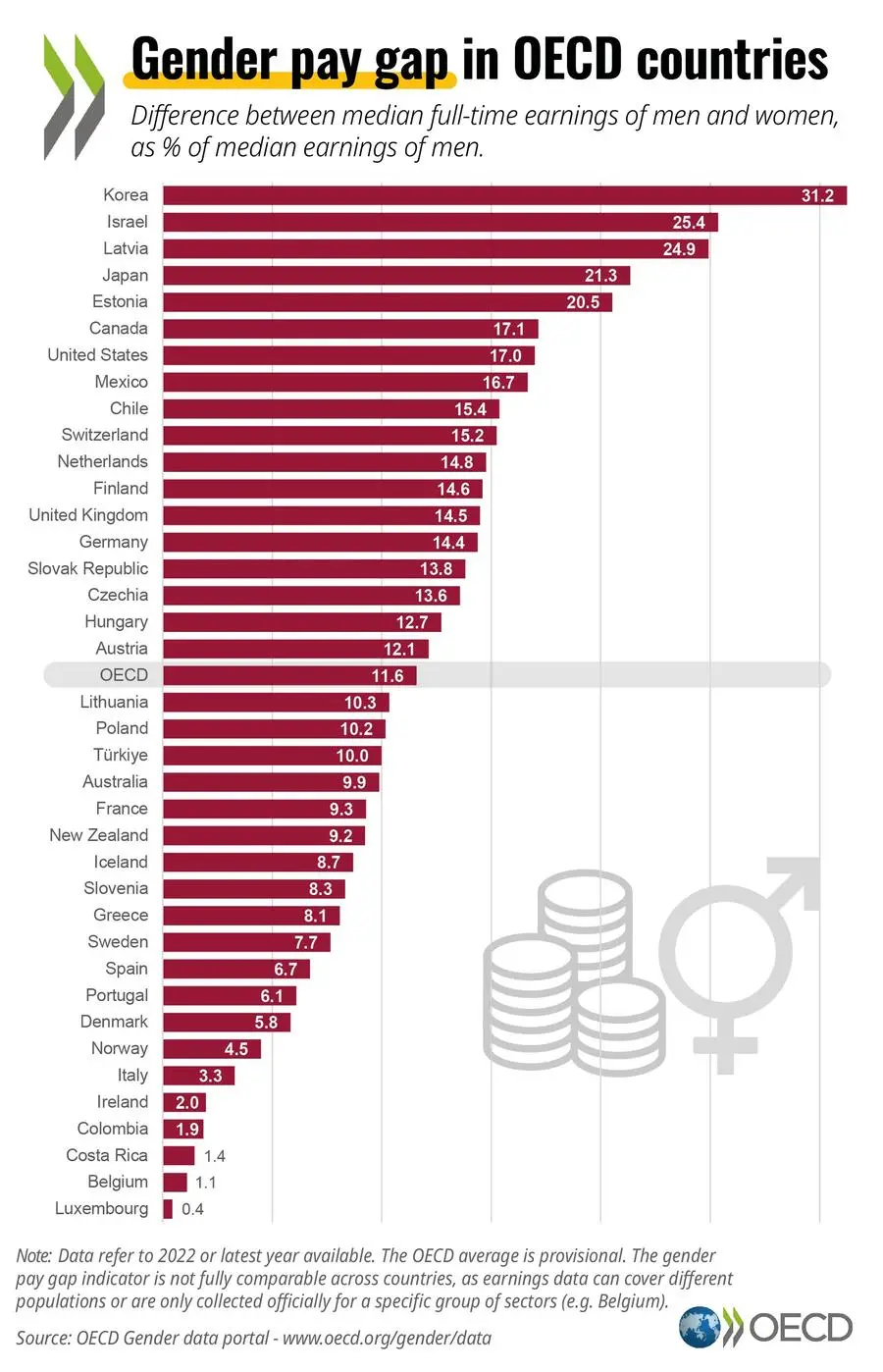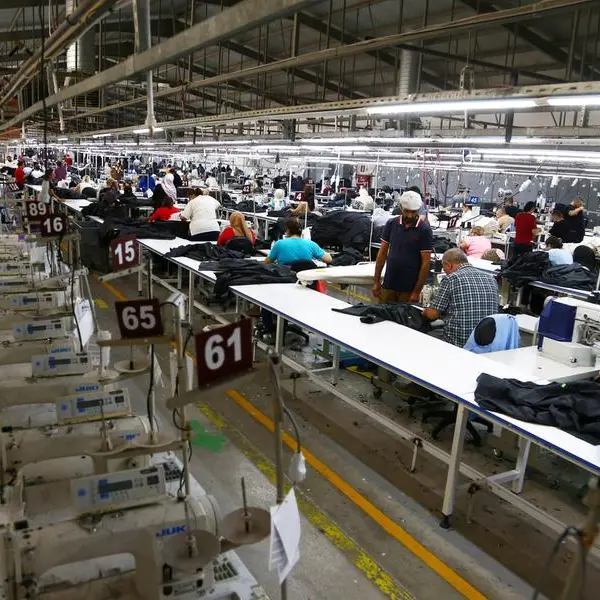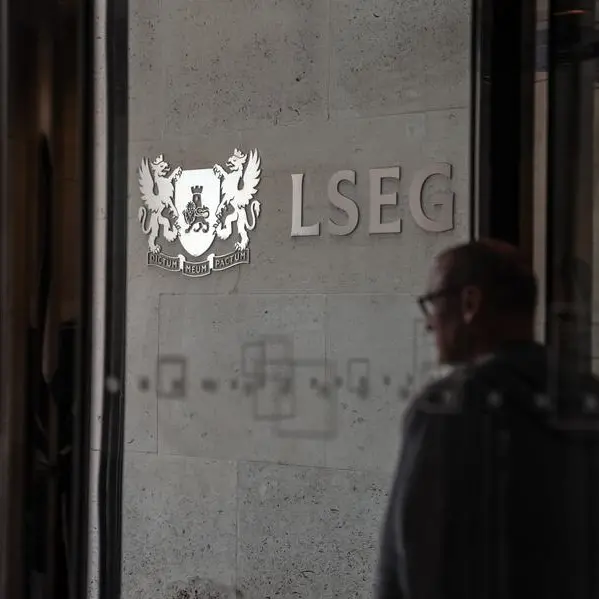PHOTO
The gender pay gap has decreased over the last 20 years, but women continue to fare worse than men in labour markets, the Organization for Economic Cooperation and Development (OECD) said in a report on Friday.
On average across OECD countries, women take home 11.9% less than their male counterparts, which means that for every dollar or euro a man makes at his full-time job, a woman makes around 88 cents, the report said, citing 2021 data.


“This represents only a relatively small improvement since 2010, when the gender wage gap stood at 14%,” OECD noted.
Within the OECD area, the full-time gender pay gap is lowest in Luxembourg, at 0.4%, followed by Belgium (1.1%), Costa Rica (1.4%), Colombia (1.9%) and Ireland (2%).
The gender wage difference is highest in Korea (31.2%), followed by Israel (25.4%), Latvia (24.9%), Japan (21.3%) and Estonia (20.5%).
There are several factors that cause the pay difference. According to OECD, women are more likely than men to end up working part-time at some point in their lives. This means women have lower aggregate income and a lower chance of getting a promotion at work.
Women are also less likely to change jobs, further reducing lifetime earnings, as job changes tend to be associated with higher income.
“Despite progress over generations, women still fare worse than men in labour markets,” the report said.
“Cumulative differences in employment rates, participation in part-time work, compensation and work quality result in substantial gender gaps in earnings and career advancement. This contributes to lower lifetime earnings and a greater risk of old-age poverty for women.”
The OECD recommends that there must be a holistic approach to address the gender wage gap through public policies.
Girls and young women must be encouraged to study in diverse fields, while paid parental leave must be promoted and equal pay legislation and transparency requirements must be implemented.
(Writing by Cleofe Maceda; editing by Seban Scaria)
seban.scaria@lseg.com





















